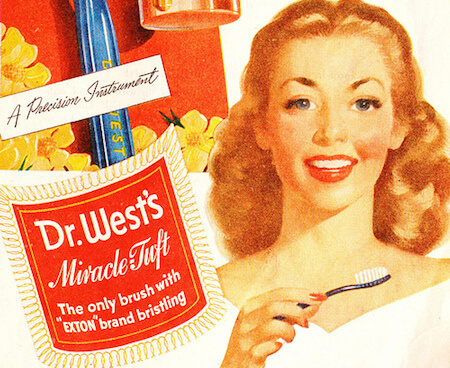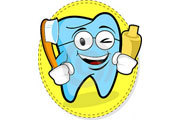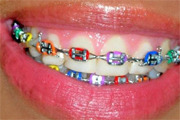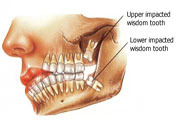As I'm sure you know, taking care of your teeth is very important to your overall health. Regular brushing and flossing can prevent tooth and gum disease. You might be surprised at how many parts of your body can be affected by poor oral health - bacteria in your mouth can make it into your bloodstream, which can affect your heart and potentially lead to a heart attack.
That bacteria can also get into your brain, which can eventually contribute to dementia. People throughout history have known how important oral health is, and have been using some kind of toothbrush to maintain their health for thousands and thousands of years.
 Twigs used to brush teeth might have looked a little like this!Courtesy of deltadentalidblog.com
Twigs used to brush teeth might have looked a little like this!Courtesy of deltadentalidblog.com
Ancient Toothbrushes
- As far back as 3000 BC, Ancient Egyptians were using a form of toothbrush to keep their mouths clean! This typically consisted of a small sick.
- One end was frayed and used to brush teeth, and the other was used as a type of toothpick. As early as 1600 BC, the Chinese people had started using aromatic twigs to brush their teeth, so as to freshen breath as well as clean!
- Some North American Aboriginal groups even used pine needles to clean teeth and freshen breath.
- Twigs continue to be used to clean teeth, most commonly in African and Arabic countries. T
- wigs are usually from the salvadora persica, also known as the mustard bush or toothbrush tree.
- The World Heath Organization has even promoted the use of twigs from this tree an an oral hygiene tool!
 Twigs from the mustard bush are standard teeth-cleaning tools in parts of Africa!Courtesy of J. M. Garg
Twigs from the mustard bush are standard teeth-cleaning tools in parts of Africa!Courtesy of J. M. Garg
The Modern Toothbrush
- The first bristle toothbrush appeared in China during the Tang dynasty.
- The bristles were made from hog hair and attached to a handle that was usually made of bamboo or bone.
- Once international travel by boat began, this form of toothbrush was introduced to Europe, where the design was modified to use horsehair rather than hog hair.
- Toothbrushes were common in Europe by the 17th century.
- Mass production of toothbrushes started in Europe by 1840, and by 1885 in the United States.
- By 1938, the first toothbrushes made with nylon had been produced, and oral care really started to take off in North America.
- Toothbrushes have continued to evolve over the last 70 years, as it was discovered that an angled head and closely grouped bristles can clean more effectively than earlier designs.
 This ad from 1946 shows how popular mass produced toothbrushes had become by the mid-20th century.Courtesy of Weco Products Company
This ad from 1946 shows how popular mass produced toothbrushes had become by the mid-20th century.Courtesy of Weco Products Company
As you can see, people all over the world have been taking their oral health seriously throughout human history. Considering the fact that our ancestors went so far as to use pig hair to maintain their teeth, there's no excuse for you not to use your soft, cushy toothbrush! Get brushing!
Have Your Say!
How often do you brush your teeth? Comment below and share with the other Kidzworld users

































